
Warrior-shaped Haniwa,
from the Oinezuka Kiln Site, Konosu City of Saitama Prefecture
Late Kofun Period (6th century)
Possessed by Konosu City Board of Education
130cm tall
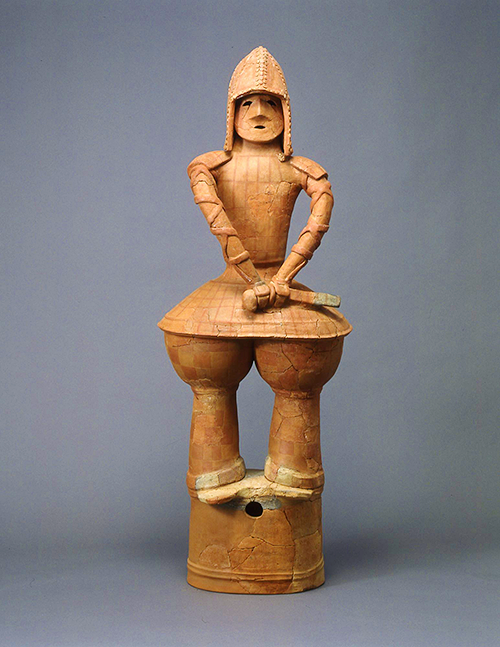
This is a Haniwa, a terracotta clay figure, representing a warrior in armor with a large sword at his waist. The warrior holds a sword in both hands, and looks as if he is drawing it and showing off his power. The large sword represented on the Haniwa may be an imitation of a large sword with bulbous pommel, called “Kabutsuchi-no-Tachi”, as the tip of the handle is rounded and bulging.
Bronze weapons, mirror and accessories,
from wooden coffin No. 3 of the Yoshitake Takagi Site,
Fukuoka City, Fukuoka Prefecture
Middle Yayoi Period (3rd century BC)
Possessed by the Agency for Cultural Affairs and held by Fukuoka City Museum
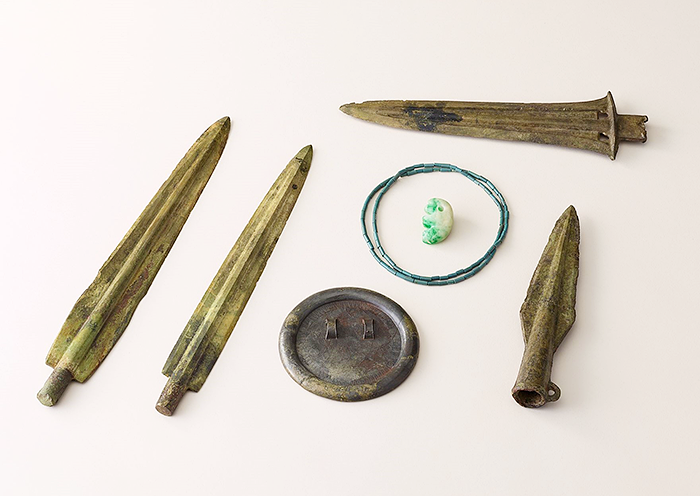
These are burial goods from a wooden coffin of the Yayoi Period, consisting of weapons such as slender bronze daggers, halberd and socketed spear, along with a bronze mirror, a comma-shaped jewel made of jade and cylindrical beads of jasper. These are the oldest set of mirror, sword and jewel among the artifacts, and serve as a link to the “Sanshu-no-jingi” (three sacred treasures).
Iron spears from the Mesuriyama Tomb,
Sakurai City, Nara Prefecture
Early Kofun Period (4th century)
Possessed by the Museum, Archaeological Institute of Kashihara, Nara Prefecture
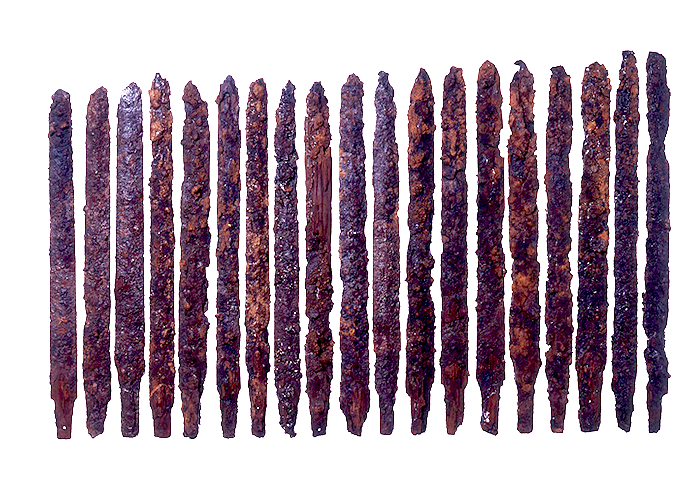
These are iron spears from the sub chamber, which accompanied the main pit-type stone chamber, of the Mesuriyama keyhole-shaped tomb, which was 224m long. While no shafts remain on any of the spears, it is estimated based on observations during the excavation that the spears had a 2–3 m wooden shaft.
Sword with lion-head pommel
from the Misakiyama Tomb, Matsue City, Shimane Prefecture
Late Kofun Period (6th century)
Possessed by Shimane Prefecture Board of Education
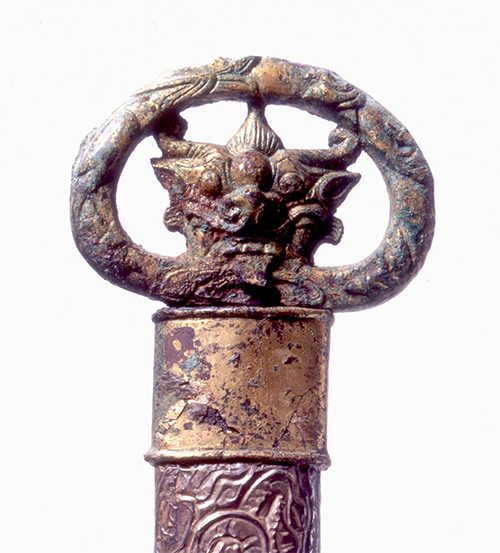
This is a large single-edged sword, and the photo shows the gilt bronze pommel with decoration. The lion-like beast with three legs is represented three-dimensionally inside the ring and has a powerful expression with its fangs bared, as if it could bite at any moment. This pommel is rare in Japan and is inferred to have originated in Goguryo, the ancient state in the northern Korean Peninsula.
Sword-shaped Haniwa,
from the Imashirozuka Tomb, Takatsuki City, Osaka Prefecture
Late Kofun Period (6th century)
Possessed by Takatsuki City Board of Education
150cm high
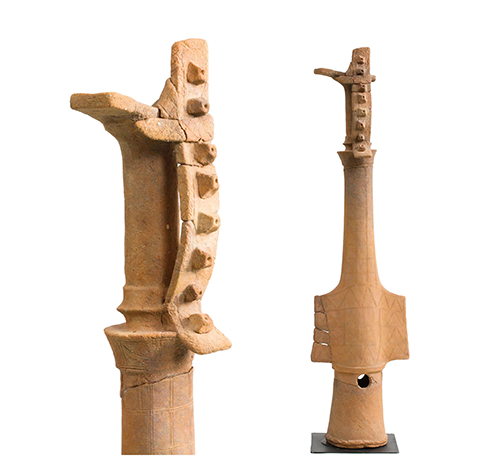
This is a Haniwa, a terracotta clay figure, representing a single-edged large sword, found from the cluster of Haniwa, reproducing funerary rites, on the bank of the Imashirozuka Tomb. The photo on the right shows the whole and the photo on the left shows the pommel of the sword. The pommel has a band with beads, a similar feature to the “Tamamaki no Tachi” sword inherited by Ise Jingu Shrine.
Based on recent research, it is thought that Emperor Keitai was buried in the Imashirozuka Tomb.
